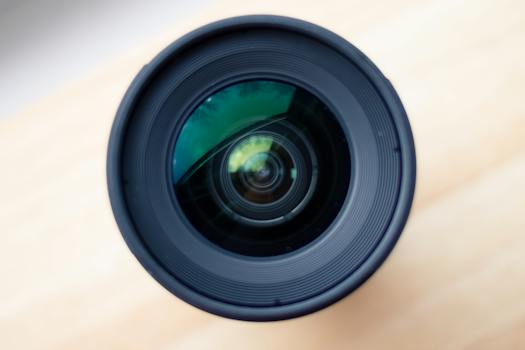-
Table of Contents
- The Power of a Lens: Understanding its Definition and Importance
- What is Lens Power?
- Calculating Lens Power
- Significance of Lens Power
- Applications of Lens Power
- Examples of Lens Power
- Example 1: Camera Lens
- Example 2: Eyeglasses Prescription
- Conclusion
- Q&A
- 1. What is lens power?
- 2. How is lens power calculated?
- 3. Why is lens power important in photography?
- 4. What are some applications of lens power?
- 5. How does lens power affect vision correction?

When it comes to optics, the power of a lens plays a crucial role in determining its ability to refract light and focus images. Understanding the concept of lens power is essential for anyone working in fields such as photography, ophthalmology, or physics. In this article, we will delve into the definition of lens power, how it is calculated, and its significance in various applications.
What is Lens Power?
Lens power, also known as optical power, is a measure of the ability of a lens to converge or diverge light. It is defined as the reciprocal of the focal length of the lens, expressed in diopters (D). The focal length of a lens is the distance from the lens to the point where light rays converge or diverge after passing through the lens.
Calculating Lens Power
The formula to calculate the power of a lens is:
Power (P) = 1 / Focal Length (f)
Where:
- Power (P): measured in diopters (D)
- Focal Length (f): measured in meters (m)
For example, if a lens has a focal length of 0.5 meters, its power would be:
Power = 1 / 0.5 = 2 D
Significance of Lens Power
The power of a lens determines its ability to refract light and focus images. Lenses with higher power (measured in diopters) have a stronger ability to converge or diverge light rays, resulting in sharper focus. In applications such as photography, the choice of lens power can impact the clarity and depth of field of the images captured.
Applications of Lens Power
The power of a lens is crucial in various fields, including:
- Photography: Different lens powers are used to achieve specific effects, such as wide-angle or telephoto shots.
- Ophthalmology: Prescription eyeglasses and contact lenses are prescribed based on the individual’s refractive error, which is determined by the lens power needed to correct vision.
- Physics: Lenses are used in optical instruments such as microscopes and telescopes, where precise control of lens power is essential for magnification and resolution.
Examples of Lens Power
Let’s consider a few examples to illustrate the concept of lens power:
Example 1: Camera Lens
A camera lens with a focal length of 50mm would have a power of:
Power = 1 / 0.05 = 20 D
This indicates that the lens has a high power, suitable for capturing detailed close-up shots.
Example 2: Eyeglasses Prescription
If an individual requires eyeglasses with a lens power of -3.00 D to correct their nearsightedness, the lenses would be designed to diverge light rays to focus images correctly on the retina.
Conclusion
In conclusion, the power of a lens is a fundamental concept in optics that influences the ability of a lens to refract light and focus images. Understanding lens power is essential for professionals in various fields, from photography to ophthalmology. By calculating lens power and considering its significance in different applications, we can appreciate the importance of this concept in shaping our visual experiences.
Q&A
1. What is lens power?
Lens power is a measure of the ability of a lens to converge or diverge light, expressed in diopters.
2. How is lens power calculated?
Lens power is calculated as the reciprocal of the focal length of the lens, measured in meters.
3. Why is lens power important in photography?
Lens power determines the clarity and depth of field of images captured, influencing the visual impact of photographs.
4. What are some applications of lens power?
Lens power is crucial in fields such as photography, ophthalmology, and physics, where precise control of light refraction is essential.
5. How does lens power affect vision correction?
In ophthalmology, lens power is used to prescribe eyeglasses and contact lenses that correct refractive errors and improve vision clarity.






